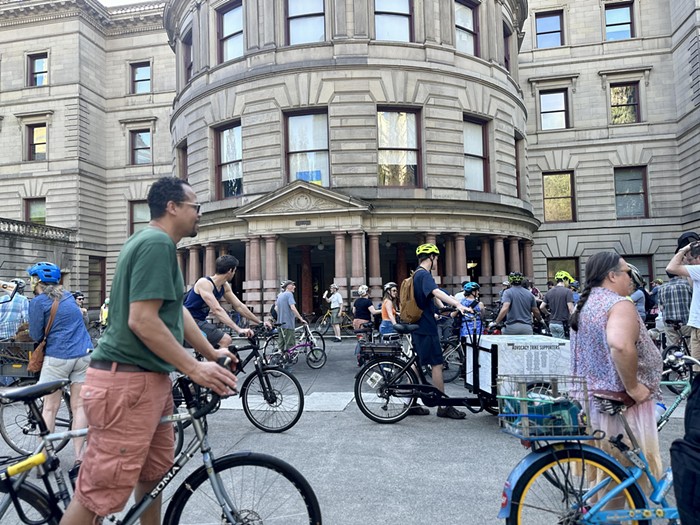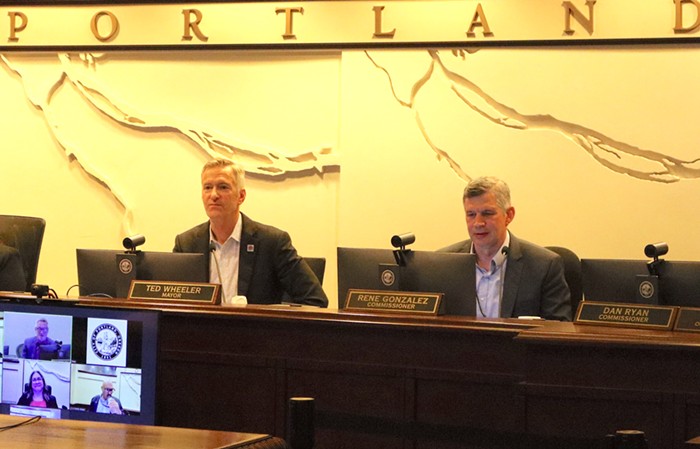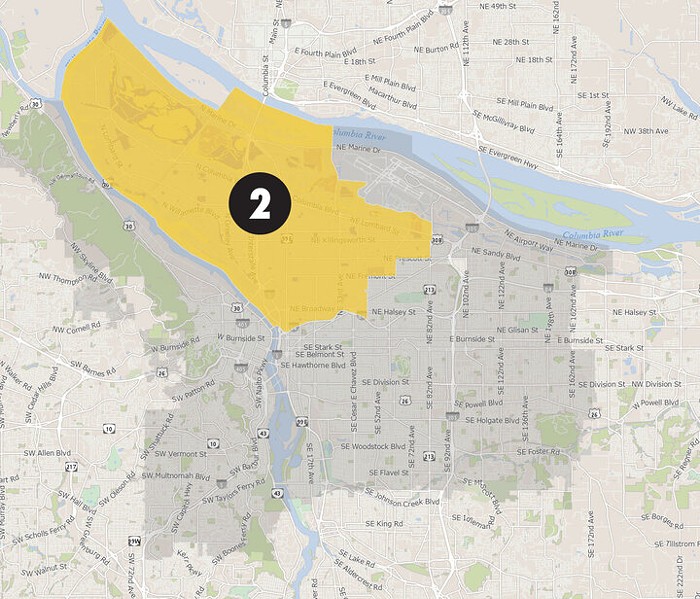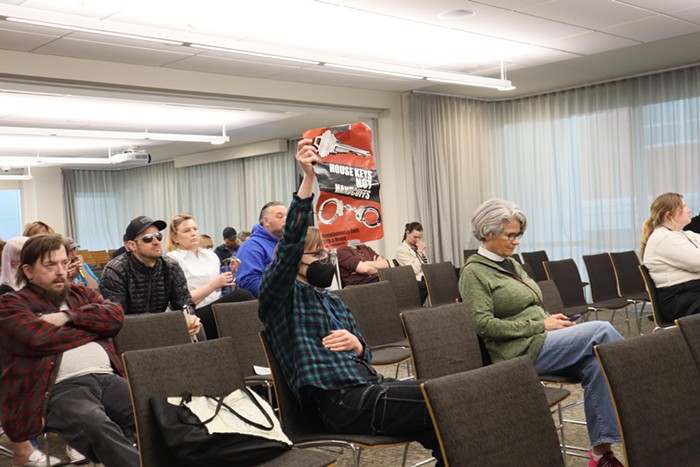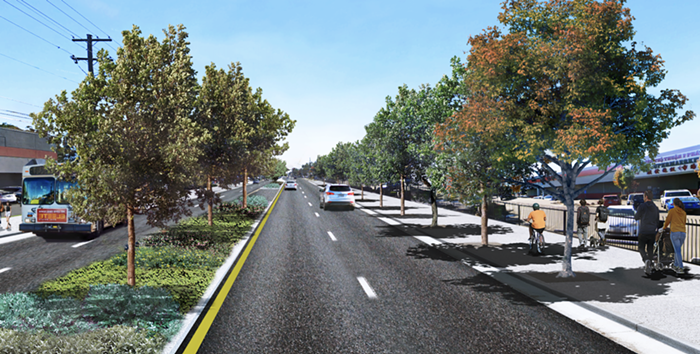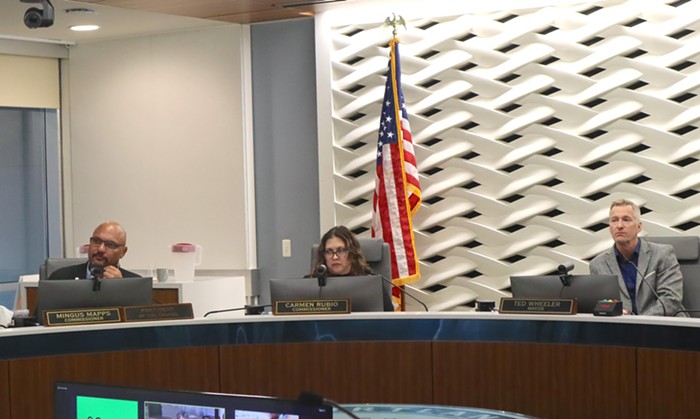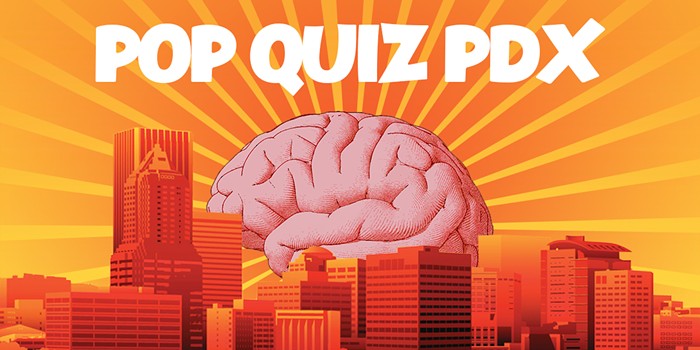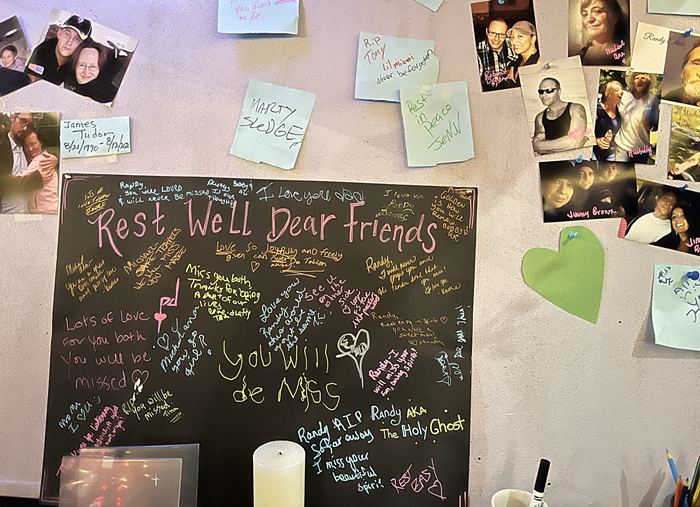Portland’s mayor, police chief, and public safety leaders say they’re looking ahead with “continued optimism” amid the city’s overall reduction in crime.
In 2023, overall homicides and shooting incidents were down across the city, compared with 2022. Portland Police Bureau (PPB) data shows homicides, non-injury shootings, and the number of homicide victims decreased by roughly 20 percent last year, though the three-year average change is much less significant, and PPB data doesn’t include the four people shot and killed by police in 2023.
Mayor Ted Wheeler said many of the shootings Portland sees are “within the homeless community,” asserting that the city’s efforts to establish more shelters will likely help reduce the homicide rates.
Shootings weren’t the only crimes to fizzle in 2023. The police bureau’s data indicates reported business robberies were down by 21 percent, and there were 16 percent fewer carjackings, and 12 percent fewer reports of aggravated assaults.
One element that hasn’t subsided: fatal crashes. The public safety team touched on Portland’s 75 traffic deaths in 2023, which was the deadliest year on record for traffic-related fatalities in over 30 years in the city, despite PPB recently reviving its traffic division.
While a single year may not be enough to gauge the overall health of the city, Portland’s public safety officials say the gun violence downward trend gives them reason to celebrate.

Mayor Ted Wheeler (left) and Community Safety leader Mike Myers (right)
during a press briefing Wednesday, January 24. Courtney vaughn
“I'm not here to suggest that our numbers and statistics reflect success, but we are moving in the right direction, particularly in the area of crime,” Portland Police Chief Bob Day said. The chief said he’s working to “transform the dynamic” between PPB and the public, while emphasizing a reduction in crime.
Shortly after taking the helm, Day ordered officers to conduct a 45-day walking patrol pilot program, which saw two-person teams walking the neighborhoods in their precincts, to deter crime, and familiarize themselves with the areas, and the public.
Portland’s leaders say policing, and the Office of Violence Prevention has helped drive a positive trend in local crime rates, but national statistics suggest broad social and economic factors are also at play.
According to FBI data, which is compiled from law enforcement agencies across the state, violent crime in Oregon spiked heavily in 2021. It ticked up across the United States in 2020, but the latest numbers indicate violent crime is down nationwide.
How the city tackles gun violence
When the city saw a rise in gun violence, Wheeler and the police bureau considered purchasing controversial gunshot detection software. They later backed away from the idea, largely due to what Wheeler called “resource allocation” needed to implement the acoustic surveillance technology. The city was also met with resounding criticism from skeptics who shared privacy concerns, and questioned the efficacy and effectiveness of technology known to generate false alarms. In some cities, the technology has led to an increase in racial profiling.
“Our decision around ShotSpotter wasn't because we thought the model wasn't a valid model,” Wheeler said. “It was about resource allocation. And frankly, we had a lot of other ideas that were on the table….”
Instead, the mayor and police bureau leaned harder into intervention and outreach-based programs, like the Focused Intervention Team, and a Portland Ceasefire program. The Focused Intervention Team (FIT) was rolled out after the city disbanded its Gang Enforcement Team, following audits that showed the team “labeled people by their alleged gang affiliations or associations without effective policies or safeguards to protect community members’ civil liberties and ensure the information was accurate.” Portland residents said the team’s practices “contributed to mistrust of police,” according to the auditor’s office. Now, the FIT is overseen by its own community-led oversight group.
The city is also working in tandem with the National Institute for Criminal Justice Reform and California’s Partnership for Safe Communities on what it calls a “focused deterrence approach” as part of the Portland Ceasefire program. The program encourages law enforcement and its partners to identify groups at risk of getting involved in gun violence, offering outreach and services as a deterrent.
“I like to think of the ceasefire program as the connective tissue between our police and our police bureau investigations, and how we match people with resources that the city offers, or that the city even is aware of,” Stephanie Howard, the mayor’s director of community safety, said Wednesday.
Prevention beyond policing
The mayor’s public safety team also acknowledged that policing alone won’t fix the external social, economic, and mental health factors that lead to gun violence and other crime.
“I used to tell the mayor all the time, that vibrant cities don’t burn, and vibrant neighborhoods don’t burn,” Mike Myers, the city’s former fire chief and current community safety transition leader, said. “Vibrant neighborhoods are safe neighborhoods.”
Myers said revitalization can go a long way, but it can often take a long time.
“If you study hotspots, what drives crime is that this is happening where there's poverty, where people don't feel like they have a place they feel comfortable. It’s hard to earn wages there, it may be blighted… those things drive crime, and it's our responsibility as a city to identify where those locations are, and put plans together to change that,” Myers said. “It takes some time. It's not something that happens overnight. Those are long-term investments.”
Portland’s PR problem
Despite the latest local and national data, Portland has been the target of persistent negative stereotypes, fueled by a spike in violent crime during the pandemic, and a rise in visible homelessness and urban blight. The city’s problems aren’t unique. In fact, California cities like Sacramento and Oakland, which both have smaller populations than Portland, have more homeless people.
Still, the city’s economic agency says the narratives about Portland have hurt tourism and downtown foot traffic. That could explain the impetus for Wednesday’s press briefing outlining positive trends.
Wheeler, who oversees the city’s police bureau and most of its homelessness programs, is eager to reverse the unsavory narrative that still haunts Portland. During Wednesday’s press briefing, he touted the city’s removal of more than 400 “derelict and dangerous” vehicles around the city, including RVs, in an attempt to remove blight and corral unhoused Portlanders into one of the city’s village-style outdoor shelter sites.
Free from political ramifications after announcing last fall that he wouldn’t seek another term in office, Wheeler has been candid with his input and comments in recent months. Last month, during discussions about tourism and Portland’s economy, he spared no words for those who exploit an unflattering narrative of Portland for political purposes.
During his press conference, Wheeler cited the “tireless,” and often dangerous work of police, and again dished out pointed criticism of those who generalize Portland as a city in decline.
“These people deserve far better than a false narrative promoted by anyone who does not share my optimistic view of the city of Portland's future,” Wheeler said. “Portland has rallied, and I'm committed to maintaining this positive momentum for all of these people, and the entirety of this community until my last minute in office.”


